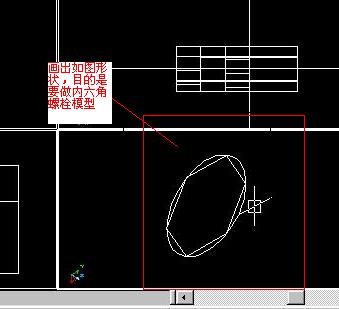1) link-node model


路段-节点模型
2) sectional model


节段模型
1.
Taking a bay bridge with a main span 688 m as an example,this paper investigates the influence of railing curbstone structure on the flutter stability of box main girder through sectional model wind tunnel test.
以某一主跨688 m的海港大桥为例,通过节段模型风洞试验研究栏杆缘石构造对箱形主梁颤振稳定性的影响。
2.
The three-component of aerodynamic force of a 1∶60 scale sectional model was tested for the 75 test cases including bridge deck without vehicles,bridge deck with vehicles and construction stage.
进行了1∶60缩尺模型试验,开展了桥面无车状态、桥面有车状态和施工状态下的75个试验工况节段模型测力试验研究,并利用获得的三分力系数进行了全桥静风响应分析。
3.
Based on the Shanghai Bridge over Yangtse River, the vortex-excited resonance of a 1:60 scale sectional model was tested in a TJ-1 wind tunnel, without or with vehicles at the attack angle of 0(, +3( and -3(, respectively.
以上海长江大桥为背景,在同济大学土木工程防灾国家重点实验室TJ-1边界层风洞中进行了1∶60缩尺模型试验,开展了桥面无车状态、桥面有车状态下的两种断面形式以及0°、+3°和-3°三种风攻角共6个试验工况节段模型涡激共振试验研究,并将模型试验结果经过振型修正换算到实桥。
3) section model


节段模型
1.
Algorithm for free vibration identification of bridge deck section model system matrix;


桥梁节段模型系统矩阵自由振动识别的一种算法
2.
The wind tunnel tests for measuring the static wind forces on the bridge girder and the section model wind tunnel dynamic testing for Caiyuanba Yangtze River Bridge in Chongqing are introduced in this paper.
风致振动是大跨度中承式拱桥设计的主要控制因素之一,本文介绍了重庆菜园坝长江大桥风洞主桥节段模型静力三分力试验以及节段模型动态试验的主要内容及相应的结果,介绍了由于双拱干扰下的主拱静力三分力试验和涡振试验及其结论。
3.
The section model wind tunnel tests and test results are described, and the wind-resistant behavior of the bridge is evaluated based on the tests.
对杭州湾大桥北航道斜拉桥成桥状态、施工状态进行了动力特性分析,介绍了节段模型风洞试验的主要内容、试验结果,据此分析评估了该桥的抗风性能。
4) segmental model


节段模型
1.
Wind tunnel test of segmental models of half-through truss arch bridges;


中承式桁架拱桥节段模型风洞试验研究
5) node model


节点模型
1.
The node model, system model and protocol design of the service electricity information network are p.
给出了它的节点模型、系统模型和协议设计。
6) two-node model


两节点模型
1.
The method to solve average body temperature by Professor Gagge s two-node model was analyzed, and then a more simple body temperature regulation model (one-node model )was established according to the thermal balance of human body and the ambient.
分析了利用Gagge教授“两节点模型”求解人体平均温度的方法,然后根据人体与环境间热交换的平衡建立了一个简单的人体温度调节模型——“一节点模型”,避免了求解人体平均温度时所需要的复杂计算,该模型不但减少了计算求解的工作量,而且结果与“两节点模型”间有着很好的一致性;作为实际应用,利用该模型制作了温度突变环境下人体温度求解表格及曲线,总结了在该环境下人体温度变化规律,从而找到了热感觉指标TSENS在温度突变环境下的实用途径。
补充资料:AutoCad 教你绘制三爪卡盘模型,借用四视图来建模型
小弟写教程纯粹表达的是建模思路,供初学者参考.任何物体的建摸都需要思路,只有思路多,模型也就水到渠成.ok废话就不说了.建议使用1024X768分辨率
开始
先看下最终效果

第一步,如图所示将窗口分为四个视图

第二步,依次选择每个窗口,在分别输入各自己的视图

第三步,建立ucs重新建立世界坐标体系,捕捉三点来确定各自的ucs如图

第四步,初步大致建立基本模型.可以在主视图建立两个不同的圆,在用ext拉升,在用差集运算.如图:

第五步:关键一步,在此的我思路是.先画出卡爪的基本投影,在把他进行面域,在进行拉升高度分别是10,20,30曾t形状.如图:

第六步:画出螺栓的初步形状.如图

第七步:利用ext拉升圆,在拉升内六边形.注意拉升六边行时方向与拉升圆的方向是相反的.
之后在利用差集运算


第八步:将所得内螺栓模型分别复制到卡爪上,在利用三个视图调到与卡爪的中心对称.效果如图红色的是螺栓,最后是差集

第九步:阵列

第10步.模型就完成了

来一张利用矢量处理的图片

说明:补充资料仅用于学习参考,请勿用于其它任何用途。
参考词条